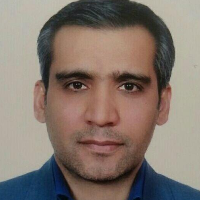Competence of industry-oriented sense making of engineering students - an integrated approach
The main purpose of this research is to investigate the industry-oriented sense making competencies of engineering students. This qualitative research was carried out using the seven-step method of Sandlovski and Barroso. The metacomposite team consisted of three experts in curriculum planning and one expert in metacomposite research. 107 related research sources were used as the basis of the analysis, The result of which was extracting 11 themes of problem finding, finding a topic, choosing a topic with the aim of finding a new solution. Analyzing the information needs, designing and compiling the information search structure, implementing the information search process, evaluating the information search process, compiling the problem solving structure is based on the final information. Also the implementation of problem solving, the consequences of problem solving, and the final decision regarding the problem solving structure. The validity of the data was confirmed by using the techniques of reliability, transferability and alignment of data and trustworthiness of the data was also confirmed by the accurate guidance of the flow of information collection and alignment of the researchers. The results showed that proper sense making is necessary for success in many jobs, and a person must be able to make decisions, take action and develop an action plan in a turbulent and complex environment and in an uncertain state. Professors can show their creativity in the classroom by teaching sense making in the teaching process and combine the art of effective teaching with scientific knowledge. Based on the results of the research, on the one hand, it can provide educational planners with a wide range of experiences, on the other hand, the identification of themes analyzed in the sense masking approach has a significant impact on improving the quality of teaching in the field of engineering education. The correct understanding of these factors are very important for the university and the higher education system.
-
Development and validation of a comprehensive scale of sustainable ethical leadership in Iran's higher education system
*, Razieh Karimi
Qurterly Journal of Research and Planing in Higher Education, -
Developing a Model to Improve Educational Leadership Capacity of Farhangian University Students in Society-Engaged Higher Education
Mojtaba Taheri, Hamid Farhadirad *, , Sakineh Shahi
Educational Psychology, -
Deviant Behaviors of Students in Educational System: A Meta-synthesis Model-Building Theory
Mehdi Mohammaadi *, Farzane Deimehkar Haghighi
Journal of Applied Sociology the University of Isfahan, -
Visualizing the Emerging Studies and Scientific Mapping of Research Related to the Adaptation of Higher Education and Industry4.0
Mosayeb Bameri, *
Journal of Higher Education Letter, -
The Perfectionist Experiences of Elementary School Teachers from Virtual Education- The Case: Shiraz Teachers
, Majid Kowsary, Reza Naseri Jahromi*, Majid Shabanifard, , Sedigheh Shadi
Knowledge & Research in Applied Psychology, -
Designing the Education Quality System Model of Shiraz University: A Total Interpretive Structural Modeling (TISM) Approach
Zahra Nekuei, Payam Shojaei*,
Studies in Learning & Instruction, -
Designing a Model of Historical Reasoning Skills For History Students
*, Masoumeh Dehghan, Reza Naserijahromi, Parastoo Nabeei, Marzieh Mesgarpoor,
Journal of Curriculum Research, -
Identifying and Prioritizing Factors Influencing the Selection of School Principals Using Meta Combination Method
Parastoo Soltanii, Yadollah Mehralizadeh *, Sakineh Shahi, , Ali Beiramy
Quarterly Journal of Research in Educational Systems,






